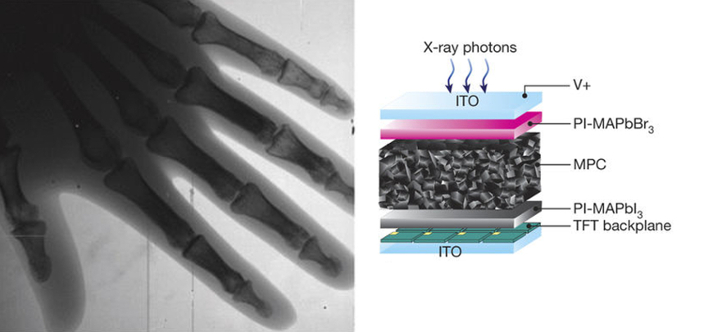New cost-effective perovskite* semi-conductor material, developed with Sungkyunkwan University, is 20 times higher in sensitivity for X-rays, with 1/10th of typical radiation exposure
Samsung Electronics today announced that the Samsung Advanced Institute of Technology (SAIT), in collaboration with Sungkyunkwan University in Seoul, Korea, has developed a detector material that decreases radiation exposure to less than 1/10th of the normal amount typical for medical X-ray imaging such as fluoroscopy, digital radiography, CT, and other radiology equipment.
The research findings were published in the October 4, 2017 edition of the scientific journal Nature in an article entitled “Printable organometallic perovskite enables large-area, low-dose X-ray imaging”
Researchers at SAIT developed a perovskite semi-conductor material that, in addition to being significantly lower in radiation, is 20 times higher in sensitivity for X-rays, as well as cheaper in price compared to conventional flat panel detectors. Additionally, while conventional detectors processed with a vacuum deposition process, the technology used to make thin films of semi-conductors, do not allow extension to a large area due to technical limitations, the new material allows enlargement as required through a solution-based process such as printing or bar coating. Commercialization of this technology offers the potential for producing low-dose X-ray detectors that can scan the whole body at once.
“In order to apply perovskite onto X-ray photons, which are highly penetrable, the material must be 1,000 times thicker than that of a solar cell, while being able to retain electric signals for a sufficiently long enough time converted from X-ray,” said InTaek Han, Vice President of SAIT. “The new method of synthesis developed from the research is a key breakthrough for the field.”



















